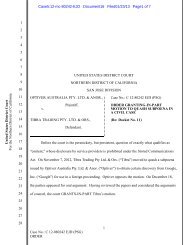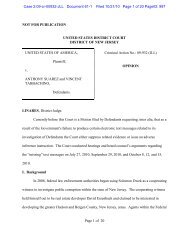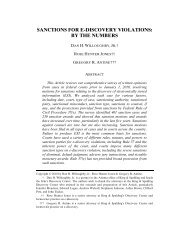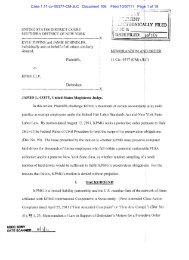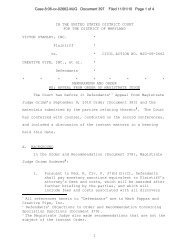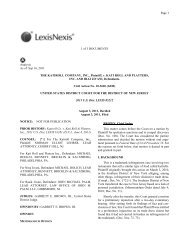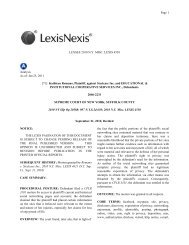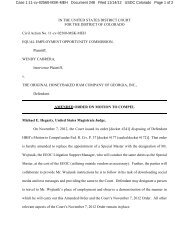Rimkus Consulting Group Inc. v. Cammarata - Ballard Spahr LLP
Rimkus Consulting Group Inc. v. Cammarata - Ballard Spahr LLP
Rimkus Consulting Group Inc. v. Cammarata - Ballard Spahr LLP
Create successful ePaper yourself
Turn your PDF publications into a flip-book with our unique Google optimized e-Paper software.
Case 4:07-cv-00405 Document 450 Filed in TXSD on 02/19/10 Page 132 of 139<br />
defendants induced any <strong>Rimkus</strong> customer or client to breach any such obligation under a<br />
contract with <strong>Rimkus</strong>. The defendants’ motion for summary judgment on <strong>Rimkus</strong>’s claim<br />
for tortious interference with existing contracts is granted.<br />
Tortious interference with contract and tortious interference with prospective business<br />
relations are separate causes of action. Wal-Mart Stores, <strong>Inc</strong>. v. Sturges, 52 S.W.3d 711,<br />
716–21, 725, 727 (Tex. 2001). To establish a claim for tortious interference with prospective<br />
business relations, the plaintiff must prove that: (1) there was a reasonable probability that the<br />
plaintiff would have entered into a contract; (2) the defendant committed an intentional act,<br />
with the purpose of harming the plaintiff; and (3) actual harm or damage resulted from the<br />
defendant’s interference, i.e., that the defendant’s actions prevented the relationship from<br />
occurring. See Bradford v. Vento, 48 S.W.3d 749, 757 (Tex. 2001); Martin v. Kroger Co., 65<br />
F. Supp. 2d 516, 563 (S.D. Tex. 1999). The plaintiff must show that the defendant’s conduct<br />
was either independently tortious or unlawful, that is, that the conduct violated some other<br />
recognized tort duty. See Sturges, 52 S.W.3d at 726; Astoria Indus. of Iowa, <strong>Inc</strong>. v. SNF, <strong>Inc</strong>.,<br />
223 S.W.3d 616, 632 (Tex. App.—Fort Worth 2007, pet. denied). The “prevented the<br />
relationship from occurring” element requires “at minimum, that the tortious conduct<br />
constitute a cause in fact that prevented the prospective business relationship from coming to<br />
fruition in the form of a contractual agreement. The test for cause in fact, or ‘but for<br />
causation,’ is whether the act or omission was a substantial factor in causing the injury<br />
‘without which the harm would not have occurred.’” COC Servs., Ltd. v. CompUSA, <strong>Inc</strong>., 150<br />
S.W.3d 654, 679 (Tex. App.—Dallas 2004, pet. filed) (quoting Doe v. Boys Clubs of Greater<br />
132



